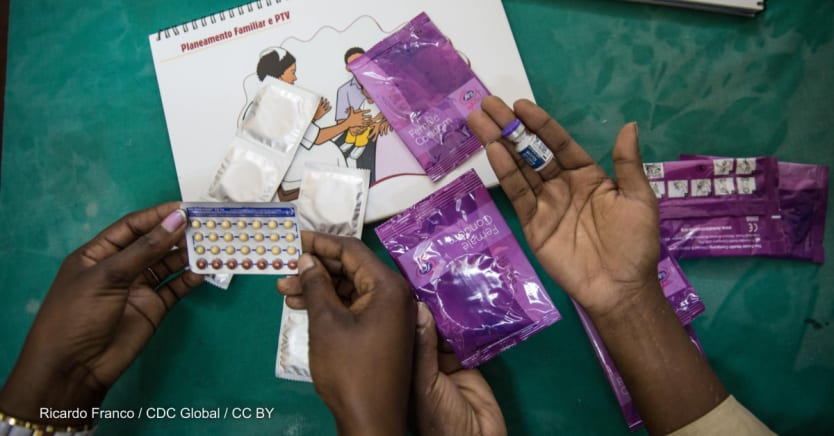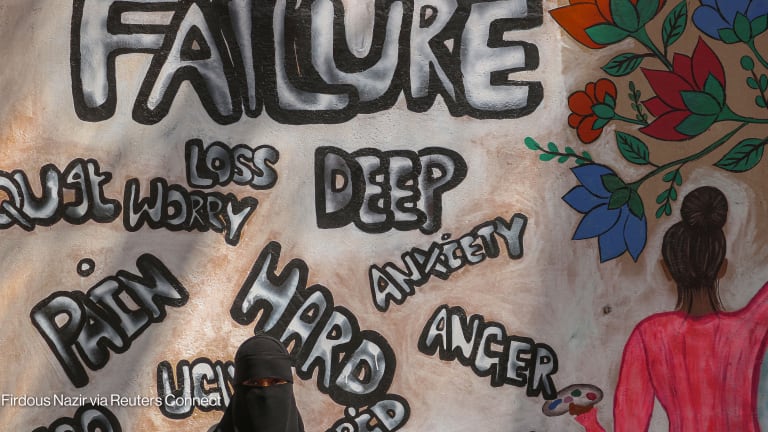
Burundi has the lowest income per capita of any country measured by the World Bank. But according to a rights measurement tracker, it’s doing its best to meet its population’s health needs.
Burundi scored 100% in ensuring its people’s right to health in the Human Rights Measurement Initiative’s latest update to its Rights Tracker, launched Wednesday. It’s the only country out of 144 to achieve this perfect score, despite having one of the lowest per capita incomes globally. Its 2020 per capita income was $731, measured in 2017 dollars with adjustments for inflation and purchasing power.
But that doesn’t mean everyone in the country is enjoying this right, according to experts behind the initiative.
“It's the best we've seen at that per capita income level on the right to health historically over the past 25 years. … Does that mean that everybody in the country enjoys rights? Absolutely not.” said Susan Randolph, a co-founder of the initiative and co-director of the research program on economic and social rights at the University of Connecticut’s Human Rights Institute.
“That [score] is simply telling you that with the resources that it has, it's doing as best as might be expected. … But its resources are so bad that a lot of people, tons of people, don't enjoy that right,” she told Devex.
But government expenditure on health isn’t always as predictive of how well a country is ensuring its population’s right to health. An example, Randolph said, is the United States. According to the World Bank, U.S. government domestic health expenditure per capita is one of the highest globally at $5,552 in 2019. Yet, the country scored 82.1% on the tracker’s right to health, indicating that it is only achieving 82.1% of what it should be able to achieve even with a high health spending. The U.S. has some of the worst maternal mortality rates among particular population subgroups too, Randolph said.
The Pro read:
'The vision is to transform global health security'
Devex speaks to Dr. Raj Panjabi about how the Biden administration's global health security strategy is evolving.
Citing a U.S. National Center for Health Statistics report, Randolph said the maternal mortality rate for non-Hispanic Black women in the country in 2020 was 55.3 per 100,000 live births — 2.9 times the rate for non-Hispanic white women. This is higher than the maternal mortality rates in several lower-middle-income countries. For example, the maternal mortality rate in Egypt was 37 per 100,000 live births in 2017, according to a database of the United Nations.
“We [in the U.S.] have an excellent health care system — if you have the money to buy in, if you have the money to purchase insurance … [and] when the insurance doesn't cover certain things, to pay out of pocket. But in terms of people who don't have insurance, they aren't getting the care that they need,” Randolph said.
Randolph said she is concerned that rights may have regressed under the COVID-19 pandemic.
What’s being measured?
The Rights Tracker is an annual measurement looking at how well countries are meeting their populations’ economic, social, political, and civil rights. The initiative uses a set of indicators to score countries against these rights. For health, that includes child and adult survival rates, as well as baby birth weights and use of modern contraceptives.
The initiative scores countries against two benchmarks. One is based on how well nations are doing with their available resources — this is where Burundi got 100% — and the other compares countries globally. The data is meant to help advocacy groups pushing their governments to do more to realize these rights, Randolph said.
“They can come back when their government says, ‘You know, we just don't have the money to spend more on health.’ They can come back and say: ‘Why is it that other countries that [are at our] per capita income level has done so much better? Either your policies are wrong or misguided, or something else is going on. But you can't just say you don't have enough money, because you should be able to do this well, given your income,’” she said.
Modern contraceptive use
Across the different issues the team looks into, Randolph said countries tend to perform better on health. But ensuring people’s access to reproductive health care is an area with the biggest challenges due to religious and political views, as well as cultural sensitivities.
The must-read weekly newsletter for exclusive global health news and insider insights.
As a young researcher in Turkey in the 1970s, Randolph recalled that the most important factor affecting women’s access to reproductive health care in the country was how close a service location was to a teahouse.
“The most important thing was whether women had to walk past the teahouse to get services because the teahouse is where all the men hang out. And the teahouse is announcing that maybe you're going to that clinic … to restrict the number of kids you want to have. And at the time in Turkey, big families were a sign of male masculinity. So even if the husband wanted it [family planning services], he didn't want to announce it,” she said.
The use of modern contraceptives continues to vary in Turkey today, with the Rights Tracker showing little change in this indicator over more than a decade. A 2021 study showed that while modern contraceptives are widely available in Turkey, many women continue to rely on traditional methods such as withdrawal.
But high-income countries aren’t exactly doing any better. The U.S. performs badly on the contraceptive measurement, with a score of 66.8% — a drop from 77.1% in 2007.
China scored 94.7%, the highest under this particular indicator — but that’s not much of a surprise, Randolph said, given China’s active promotion of modern contraceptives as part of its one-child policy, which ended at the close of 2015. To address declining birth rates, China has since shifted policy to allow couples to have up to three children.
But a country scoring high on health or any other single right doesn’t necessarily mean others are ensured. China, for instance, has some of the worst performance on empowerment and safety rights, according to the tracker.
Safety rights measure to what extent people are safe from harmful state actions such as arbitrary arrests, forced disappearances, death penalty, extrajudicial execution, torture, and ill-treatment. Empowerment rights meanwhile measure if people are able to express themselves freely through freedom of opinion and expression, assembly and association, and participation in government.
China scored 2.8 out of 10 for safety rights, and 2.1 out of 10 for empowerment rights, suggesting the government is far off from respecting these rights. According to the tracker, China’s performance is “worse than average” on both these rights.
Randolph said that different rights “tend to be mutually supportive”: Healthy people have more energy to lobby their government, exercising their right to express their opinion and peacefully assemble, for example.
But this “does not mean that if one right is enjoyed the others will necessarily be enjoyed,” Randolph said.









